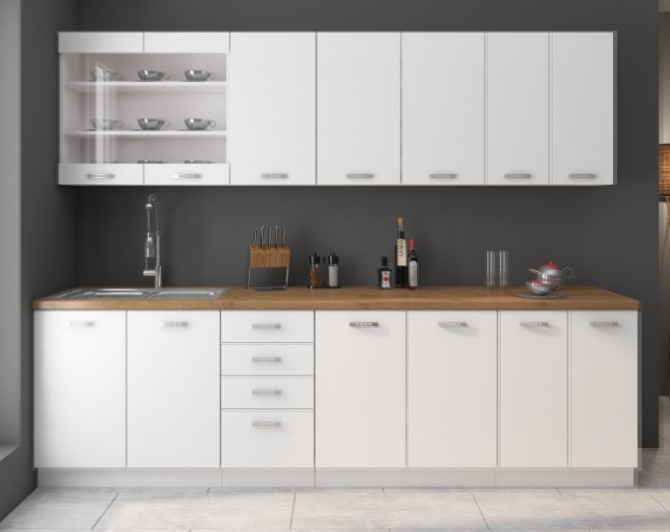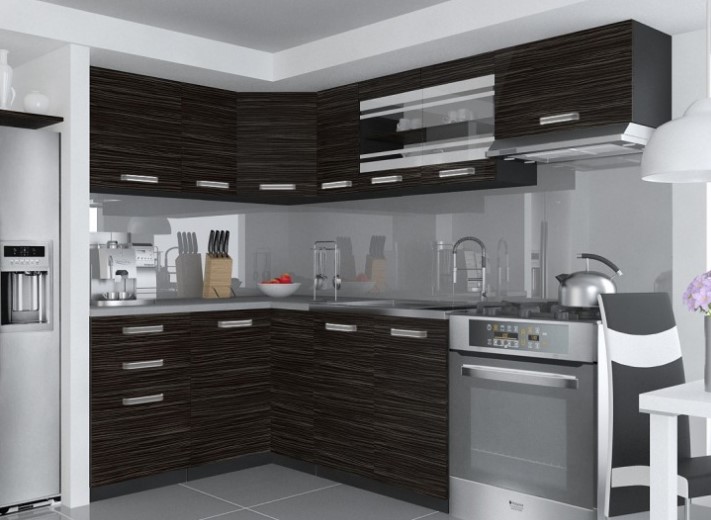Pitfalls to Avoid When Designing Your Kitchen
Most activities in your home, from cooking to eating, drinking, socializing, and cleaning, take place in your kitchen. This is the reason why it is extremely important to have a room that is functional and beautiful at the same time. It doesn’t matter what the design or style of this part of your house might be, layout and organization will always be the main components.
Here are a few critical tips to remember and pitfalls you need to avoid for you to have the most elegant and practical designs for your Dom24 kitchen.
Table of Contents
Obstructions in the Kitchen Triangle
Design experts refer to the refrigerator, stove, and sink as the kitchen triangle. This is the place that gets the highest number of activities. This is why designing the triangle requires unobstructed access and careful planning. Out of these three parts, the sink often sees the most action although your triangle must have an easy and convenient access to your refrigerator, stove, and countertop workstations.

Your sink must obviously be close to the plumbing. There are times when due to the pipe placement, kitchens have been designed with sinks placed in a not so good location. If it is the case in your house, you might want to hire a plumber who can relocate your plumbing to make room for the best placement of your sink.
It doesn’t matter what the layout or size of kitchens might be, whether it is an island, U-shaped, galley, or L-shaped, the sum of all legs in the work triangle must never be more than 25 feet or less than 10 feet. When the work triangle is too cramp, people will trip over one another. If it is too big, it can be a tiring chore to prepare food.
Poor Lighting
This is one room of your house where it is never recommended to have bad lighting. It is not only a matter of great ambiance and design. Proper task lighting is a must due to safety due to handling sharp knives as well as other tools. Also, when the room has more light, you will be able to better show off the elements of your design.
In general, there are three kinds of lighting that you need in the room. These are general lighting for overall illumination, accent lighting, and task lighting.
As far as kitchens are concerned, make sure that you check the work areas and pay attention to providing light to every spot where and when it is needed. You also need to consider installing lighting right above the primary work areas.

A series of mini-pendants or pendant lights can be used for enhancing the functionality and beauty of kitchens. Pendants will look wonderful when placed above sinks. A series of mini-pendants, on the other hand, will work great over islands and breakfast bars. Under cabinet lighting can also be installed to ensure that your counters have adequate lighting for common tasks.
Insufficient Counter Space
A very common complaint when designing kitchens is the lack of enough counter space. Due to all activities where a countertop is required and the appliances that will be permanently placed there, it only makes sense that you would to fit the most amount of open horizontal surface area as much as possible. The easiest way of doing it is to add breakfast bars or islands to L-shaped kitchens.
Wasted Space for Storage
It is only normal for kitchens to have lots of stuff. Aside from that, items hidden behind the cabinets may have an odd shape and require additional space, such as stand mixers or food processors. Finding the perfect spot for your appliances and making sure that they can be easily accessed can be quite tricky.
Since built-ins can be quite expensive and the area’s overall size might be limited, a very common design mistake is failure to include sufficient storage. You might be surprised but even the smallest kitchens also have wasted space that could be minimized through smart planning.
For smaller kitchens, it is recommended to install extra long super cabinets complete with molding for additional space for storage. Place greenery or lighting along this molding to lure the eyes up. Cabinets should always be installed over the refrigerator. Not using the area can be a waste of space for storage for seasonal or large items. Lastly, shelves should be installed across the backs of lower cabinets. it can add up to as much 4 square feet of additional storage space.
Omitting the Backsplash
When designing or budgeting for new or remodeled kitchens, the backsplash is often the least of priorities. Or worse, it is completely left out of the entire place. While it is true that you can save some cash for now, in the long run, this will cost you lots of effort and time.
Consider all the grease, steam, and water in this part of your home and you will easily understand why having a backsplash installed above the counters or cooktop is one of the smartest ways of keeping kitchens clean and tidy. Cleaning grease off backsplash made of plastic, metal, or tile is easier than cleaning wallpaper or paint. So that means it’s of real importance what kind of materials you choose for your furniture.

Picking the Wrong Island
As far as islands are concerned, people usually think of extra storage, serving, and preparation space. However, you might be surprised to know that islands can end wasting lots of space. Picking the wrong island or installing it in an improper spot can turn things into a mess, particularly in work areas that tend to be too cluttered.
An island that obstructs traffic flow from and to the stove, refrigerator, sink, and key workstations will form bottlenecks. Islands must have a length of at least 4 feet and depth of 2 feet and it requires sufficient room so that people can work and move around it. Design professionals say that unless the kitchen has a length of 12 feet or depth of 8 feet, you should never consider it as an island in the first place.